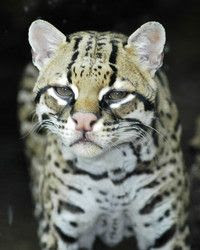Good day colleagues and friends, today we will talk a little bit about rare cat breeds, and some general facts about them.
The first one we have in our list is:
Also called the Werewolf cat, is a natural mutation from a domestic short-haired cat that has the appearance of a werewolf.
Peterbald
Original from Russia, their average body temperature hovers over 105 degrees, which helps them maintain a speedy metabolism to combat illness and disease.
Burmilla
Developed in England, unplanned mating of a British Chinchilla Longhair (Persian) to a Burmese in 1981. Resulted in the breed, which is popular in Great Britain but is still relatively rare in the States.
LaPerm
Original from The USA. Often bald at birth, LaPerm kittens quickly grow a rippled coat. is a small cat, weighing five to eight pounds. He reaches maturity when he is two to three years old
Napoleon
These cats are known for being vertically challenged. A combination between a Persian and a Munchkin, they are fluffy, small, and very soft to the touch.
Cornish Rex
Original from the UK, they’re known for their nearly perfect hearing.
Savannah
The result of crossing a domestic cat with a serval, which is a wild species of cat from Africa, so it actually has a wildcat's blood in it's veins.
Pallas / Manul Cat
Found in eastern Europe, this is believed to be the oldest species of cat, having evolved about 12 million years ago. they have round pupils instead of slits.
Andean Mountain Cat
Native to the Andes mountains in South America, Scientists estimate there are only about 2,500 of them left.
Sand Cat
Original from Africa, the Arabian Peninsula, and western Asia. They have fur that grows between their toes, a feature that’s usually reserved for arctic cats, that insulates their paws against the hot sand.
Margay Cat
They are excellent climbers and inhabit a region that stretches from Central to Southern America. They live in rain forests and hunt at night, like many other cat species.
African Golden Cat
Native to the rainforests of west and central Africa. It prefers moist, dense forests and is commonly found near rivers. It mainly hunts at night and like most other cats is a solitary creature.
Bornean Bay Cat
Is native to the island of Borneo. This wild cat is nocturnal and secretive.
Caracal
The name “caracal” comes from the Turkish word “karakulak,” meaning “black ears.” They hunt at night and often attack animals two or three times their size, such as antelope.
Flat Headed Cat
These nocturnal cats are native to the Thai-Malay Peninsula, Borneo, and Sumatra. They feed mainly on fish.
Jaguarundi
These small cats are comfortable in trees but prefer to hunt on the ground of their Central and South American homes.
KodKod
The Kodkod is the smallest cat in the Americas and primarily is found in central and southern Chile. The tiny animal weighs between 4.4 and 5.5 lbs as an adult, and is listed as vulnerable. They are excellent climbers who feed on rodents, birds, and lizards.
Rusty Spotted Cat
This cat is only found in India and Sri Lanka and is pretty tiny. It typically only weighs about 2 to 3 and half pounds – yeah, that’s tiny. They spend a large amount of their day in trees but do their hunting on the ground.
Pampas Cat
The pampas cat is found in a variety of terrains, such as grasslands, shrublands, and dry forests at elevations up to 16,000 feet.
And this is it, by now, did you know them all? is there any breed that you didn't know? Do you know any other not mentioned here?
MVZ Carolina Pruneda























